- Clone
- 4B4-1 (See other available formats)
- Regulatory Status
- RUO
- Workshop
- VI C-7
- Other Names
- 4-1BB, ILA, CD137, TNFRSF9
- Isotype
- Mouse IgG1, κ
- Barcode Sequence
- CAGTAAGTTCGGGAC
- Ave. Rating
- Submit a Review
| Cat # | Size | Price | Quantity Check Availability | Save | ||
|---|---|---|---|---|---|---|
| 309845 | 10 µg | 369 CHF | ||||
CD137 is a 39 kD transmembrane protein also known as 4-1BB. It is expressed on activated T cells. CD137 is a type I membrane protein and a member of the tumor necrosis factor receptor superfamily. CD137 appears to be important for T cell proliferation and survival, and induces monocyte activation through its interaction with 4-1BB ligand.
Product DetailsProduct Details
- Verified Reactivity
- Human
- Reported Reactivity
- Chimpanzee, Baboon, Cynomolgus, Rhesus
- Antibody Type
- Monoclonal
- Host Species
- Mouse
- Immunogen
- Ectodomain of recombinant human 4-1BB fusion protein
- Formulation
- Phosphate-buffered solution, pH 7.2, containing 0.09% sodium azide and EDTA
- Preparation
- The antibody was purified by chromatography and conjugated with TotalSeq™-D oligomer under optimal conditions.
- Concentration
- 0.5 mg/mL
- Storage & Handling
- The antibody solution should be stored undiluted between 2°C and 8°C. Do not freeze.
- Application
-
PG - Quality tested
- Recommended Usage
-
Each lot of this antibody is quality control tested by immunofluorescent staining with flow cytometric analysis and the oligomer sequence is confirmed by sequencing. TotalSeq™-D antibodies are compatible with Mission Bio’s Tapestri Single-Cell Sequencing Platform for simultaneous detection of DNA and Protein.
To maximize performance, it is strongly recommended that the reagent be titrated for each application, and that you centrifuge the antibody dilution before adding to the cells at 14,000xg at 2 - 8°C for 10 minutes. Carefully pipette out the liquid avoiding the bottom of the tube and add to the cell suspension. For Proteogenomics analysis, the suggested starting amount of this reagent for titration is ≤ 1.0 µg per million cells in 100 µL volume. Refer to the corresponding TotalSeq™ protocol for specific staining instructions.
Buyer is solely responsible for determining whether Buyer has all intellectual property rights that are necessary for Buyer's intended uses of the BioLegend TotalSeq™ products. For example, for any technology platform Buyer uses with TotalSeq™, it is Buyer's sole responsibility to determine whether it has all necessary third party intellectual property rights to use that platform and TotalSeq™ with that platform. - Application Notes
-
Additional reported applications (for the relevant formats) include: immunoprecipitation1,4, inhibition of cytokine production2,3, and ELISA. For most successful immunofluorescent staining results, it may be important to maximize signal over background by using a relatively bright fluorochrome-antibody conjugate (Cat. No. 309804) or by using a high sensitivity, three-layer staining technique (e.g., including a biotinylated anti-mouse IgG second step (Cat. No. 405303), followed by Streptavidin-PE (Cat. No. 405204)).
- Additional Product Notes
-
TotalSeq™-D reagents are designed to profile protein expression at single cell level. The Mission Bio Tapestri platform and sequencer (e.g. Illumina analyzers) are required. Please contact technical support for more information, or visit biolegend.com/totalseq/single-cell-dna
The barcode flanking sequences are CGAGATGACTACGCTACTCATGG (PCR handle), and GAGCCGATCTAGTATCTCAGT*C*G (capture sequence). * indicates a phosphorothioated bond, to prevent nuclease degradation.
View more applications data for this product in our Application Technical Notes. -
Application References
(PubMed link indicates BioLegend citation) -
- Garni-Wagner B, et al. 1996. Cell. Immunol. 169:91. (IP)
- Salih HR, et al. 2000. J. Immunol. 165:2903. (FA)
- Kienzle G, et al. 2000. Int. Immunol. 12:73. (FA)
- Langstein J, et al. 1998. J. Immunol. 160:2488. (IP)
- RRID
-
AB_2894598 (BioLegend Cat. No. 309845)
Antigen Details
- Structure
- TNFR superfamily, type I transmembrane protein, 30 kD
- Distribution
-
Activated T cells
- Function
- T cell costimulation
- Ligand/Receptor
- 4-1BB ligand
- Cell Type
- T cells
- Biology Area
- Costimulatory Molecules, Immunology
- Molecular Family
- CD Molecules
- Antigen References
-
1. Gruss H, et al. 1995. Blood 85:3378.
2. Sica G, et al. 2000. Adv. Exp. Med. Biol. 465:355.
3. Alderson M, et al. 1994. Eur. J. Immunol. 24:2219.
4. Schwarz H, et al. 1996. Blood 87:2839. - Gene ID
- 3604 View all products for this Gene ID
- UniProt
- View information about CD137 on UniProt.org
Related FAQs
Other Formats
View All CD137 Reagents Request Custom ConjugationCompare Data Across All Formats
This data display is provided for general comparisons between formats.
Your actual data may vary due to variations in samples, target cells, instruments and their settings, staining conditions, and other factors.
If you need assistance with selecting the best format contact our expert technical support team.
-
Purified anti-human CD137 (4-1BB)

PHA-stimulated (3 days) human peripheral blood mononuclear c... -
PE anti-human CD137 (4-1BB)
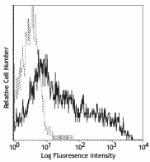
PHA stimulated (3 days) peripheral blood mononuclear cells s... -
Biotin anti-human CD137 (4-1BB)
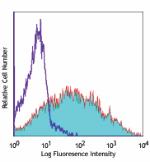
PHA-stimulated (4 days) human peripheral blood mononuclear c... -
PE/Cyanine5 anti-human CD137 (4-1BB)
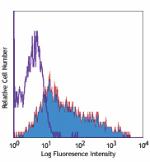
PHA-stimulated (2 days) human peripheral blood mononuclear c... -
APC anti-human CD137 (4-1BB)
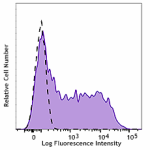
PHA-stimulated (3 days) human peripheral blood mononuclear c... -
PerCP/Cyanine5.5 anti-human CD137 (4-1BB)

PHA-stimulated (3 day) human peripheral blood lymphocytes st... -
Alexa Fluor® 700 anti-human CD137 (4-1BB)
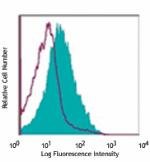
PHA-stimulated (3 days) human peripheral blood mononuclear c... -
PE/Cyanine7 anti-human CD137 (4-1BB)
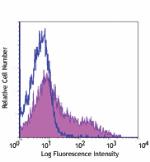
PHA-stimulated (3 days) human peripheral blood mononuclear c... -
Brilliant Violet 421™ anti-human CD137 (4-1BB)
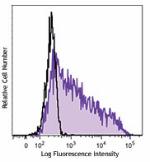
3-day PHA-stimulated human peripheral blood lymphocytes were... -
APC/Cyanine7 anti-human CD137 (4-1BB)
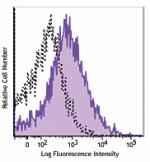
PHA-stimulated (3 days) human peripheral blood lymphocytes w... -
Brilliant Violet 605™ anti-human CD137 (4-1BB)

PHA-stimulated (three days) human peripheral blood lymphocyt... -
Alexa Fluor® 647 anti-human CD137 (4-1BB)

PHA-stimulated (three days) human peripheral blood lymphocyt... -
PE/Dazzle™ 594 anti-human CD137 (4-1BB)
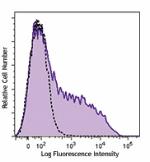
PHA-stimulated (three days) human peripheral blood lymphocyt... -
Brilliant Violet 650™ anti-human CD137 (4-1BB)
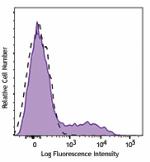
PHA-stimulated (3 days) human peripheral blood lymphocytes w... -
Brilliant Violet 711™ anti-human CD137 (4-1BB)
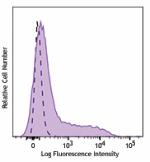
PHA-stimulated (3 days) human peripheral blood mononuclear c... -
APC/Fire™ 750 anti-human CD137 (4-1BB)
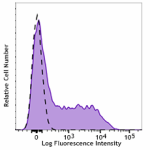
PHA-stimulated (3 days) human peripheral blood mononuclear c... -
TotalSeq™-A0355 anti-human CD137 (4-1BB)
-
TotalSeq™-B0355 anti-human CD137 (4-1BB)
-
TotalSeq™-C0355 anti-human CD137 (4-1BB)
-
Ultra-LEAF™ Purified anti-human CD137 (4-1BB)
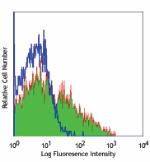
PHA-stimulated (3 days) human peripheral blood mononuclear c... -
Brilliant Violet 750™ anti-human CD137 (4-1BB)
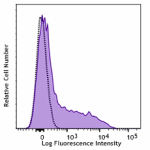
PHA-stimulated (three days) human peripheral blood lymphocyt... -
TotalSeq™-D0355 anti-human CD137 (4-1BB)
-
PerCP/Fire™ 806 anti-human CD137 (4-1BB)

PHA-stimulated (three days) human peripheral blood lymphocyt... -
Brilliant Violet 785™ anti-human CD137 (4-1BB)
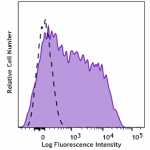
PHA-stimulated (3 day) human peripheral blood lymphocytes we... -
PE/Fire™ 744 anti-human CD137 (4-1BB)

PHA-stimulated (three days) human peripheral blood lymphocyt... -
Brilliant Violet 570™ anti-human CD137 (4-1BB) Antibody

PHA-stimulated (three days) human peripheral blood lymphocyt... 
Unstimulated human peripheral blood lymphocytes were stained...

 Login / Register
Login / Register 













Follow Us